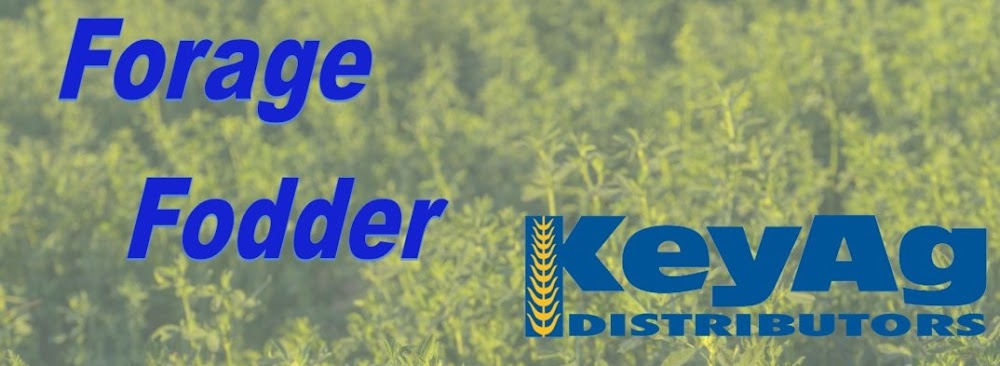Friday, December 29, 2023
Tuesday, December 26, 2023
State-by-state hay summary
Colorado—In the Dec. 14 report, compared to last report, trade activity light on moderate demand. The bulk of activity remains in the horse hay markets. Horse hay sold mostly steady.
Missouri—In the Dec. 14 report, compared to last report, the supply of hay is light to moderate, and prices mostly steady. Although no one really wants to feed in the mud lack of moisture continues to be a concern. The latest drought monitor has basically the entire state in some stage of drought again. Hay movement and demand remains good as feeding is well underway. If there is any positive to be found it would be that the above average weather has cattle warm and dry and that does lessen feed requirements ever so slightly.
Nebraska—In the Dec. 14 report, compared to last report, bales of alfalfa, grass hay and cornstalks sold steady. Dehydrated alfalfa pellets steady. Ground and delivered hay steady. Demand was light to moderate. Unseasonal warm weather across the region has been in the livestock owners favor so far this fall. Livestock has been able to graze winter pasture or cornstalks with little to no extra supplementation. Forecast looks very favorable for the rest of December with most daytime highs warmer than normal.
Oklahoma—In the Dec. 8 report, compared to the last report, the hay trade is slow to steady. Oklahoma has seen more movement compared to the past week. With minimal hay trading, we still have a larger hay inventory than usual which has caused the hay movement to be slower than in years past. Next report will be released Dec. 22.
Texas—In the Dec. 15 report, compared to the last report, hay prices are mostly steady to firm across the majority of the regions with quality and freight being the largest determinants on price. Trading activity was moderate to active on good buyer demand. Recent rains in the South have boosted winter pastures with as a hard freeze hasn’t occurred yet. The panhandle and portions of north Texas received some rain and snow mix which should provide a much needed boost to emerging winter wheat crops. Next report will be released Dec. 22.
South Dakota—In the Dec. 14 report, compared to last report, alfalfa hay steady. Moderate demand for alfalfa, good demand for high quality grass to start calves on feed with. Very mild weather this again this week is reducing the need for supplemental feeding of beef cows. Beef cows are turned out on stalk fields east river, winter pastures west river. This mild winter season, so far, is really helping to stretch hay supplies. Dairy operators continue to deal with low milk prices and aren’t pushing the hay market because of it.
New Mexico—In the Nov. 24 report, compared to last report, alfalfa hay steady. Trade active, demand good. The the state is 73% complete with fifth cutting, 54% with sixth cutting. Most parts of the state are wrapping up harvest for the season. According to New Mexico Crop Progress report as of Nov. 12. Hay and roughage supplies improved slightly from the previous week but remained in worse condition than prior years. Hay and roughage supplies were observed to be 25% very short, 42% short, 30% adequate, and 3% surplus. At 14% very short, 37% short, 45% adequate, and 4% surplus, stock water supplies were on par with the 5-year average. This is the last report for the season, reports will resume in spring 2024.
Wyoming—In the Dec. 7 report, compared to last report, hay sales sold steady. Demand was light to moderate. Quite a lot of hay will be carried over into the new year. Most might be grinding quality but is old Man winter springs up cattlemen will be happy to have something to buy and feed. Next report will be released Dec. 21.
Montana—In the Dec. 15 report, compared to last report, hay sold steady to weak. Hay sales were light again this week. Rancher to rancher sales continue to comprise most of the hay sales across the state. Hay supplies remain heavy as unseasonably warm weather and limited snowfall have kept cows from eating through excess hay. Many large producers remain in direct competition with ranchers who are selling off excess hay. Many ranchers are selling at $140-$150 delivered. Demand for hay to ship north to Canada has lightened as a strong dollar makes it more difficult to ship goods into Canada. One Canadian hay sale was reported again this week, however at lower prices than last week. Some sales were reported for tax purposes again this week as high calf prices have ranchers needing to spend money. Demand for straw is light as heavy straw supplies continue to be seen. Single loads of straw continue to move at steady money however sellers of straw are offering straw at large discounts to move volume.

-page-001.jpg)
-page-002.jpg)

-page-001.jpg)
-page-002.jpg)
-page-003.jpg)




-page-001.jpg)
-page-002.jpg)




-page-001.jpg)
-page-002.jpg)
-page-003.jpg)

-page-001.jpg)
-page-002.jpg)
-page-003.jpg)

-page-001.jpg)
-page-002.jpg)

-page-001.jpg)

-page-001.jpg)
-page-002.jpg)

-page-001.jpg)
-page-002.jpg)

-page-001.jpg)
-page-002.jpg)
-page-003.jpg)
-page-004.jpg)

-page-001.jpg)
-page-002.jpg)

-page-001.jpg)
-page-002.jpg)





